Nepal Tea vs Darjeeling: Why Nepal Wins

Introduction: Two Himalayan Icons, One Clear Winner
For decades, Darjeeling has been the darling of the tea world, earning the nickname “Champagne of Teas.” But there’s a new contender — and it comes from just across the border. Nepal tea, grown in the pristine highlands of Ilam and beyond, is quietly — and quickly — surpassing Darjeeling in freshness, craftsmanship, and sustainability.
In this blog, we’ll explore the history, terroir, flavor, ethics, and pricing of both teas, and by the end, you’ll see why Nepal tea is becoming the first choice for discerning tea drinkers worldwide.
The Origins of Darjeeling and Nepal Tea
Darjeeling’s Legacy
Darjeeling tea has a long colonial history, with British planters introducing tea bushes from China in the mid-1800s. Today, it’s grown mainly on large estates in West Bengal, India, and is protected by a Geographical Indication (GI) status.
Nepal Tea’s Rise
Tea cultivation in Nepal began in the 1860s when the Chinese emperor gifted tea seeds to Nepal’s Prime Minister, Jung Bahadur Rana. Inspired by the thriving tea industry in nearby Darjeeling, Colonel Gajraj Singh Thapa—Rana’s son-in-law—planted these seeds in Ilam and Soktim, establishing Nepal’s first tea gardens. Unlike Darjeeling, Nepal’s tea industry developed slowly and remained small-scale for decades. In recent years, however, artisan farmers have transformed Nepali tea into a global contender, producing hand-crafted teas that not only rival but often surpass Darjeeling’s finest.
📌 Learn more about craftsmanship in our Guide to Nepali Tea: Types, Benefits & Brewing Tips
Terroir: Nepal’s Fresh Edge Over Darjeeling
Both teas share a Himalayan backdrop, but Nepal’s tea gardens often sit at higher elevations — up to 7,500 feet above sea level — in cooler, less industrialized regions.
Why it matters:
-
Higher altitude = slower leaf growth, leading to more concentrated flavors.
-
Pristine environment = lower pesticide use and cleaner air.
-
Varied microclimates = wider diversity of flavor profiles.
📌 For more on Nepal’s terroir, see Why Ilam is Nepal’s Premier Tea Region.
Processing & Craftsmanship
Darjeeling teas are primarily produced on large estates, with mechanical processing designed for high volume. While some estates still handcraft premium batches, most output is scaled for export.
Nepal tea, on the other hand, thrives on small farms and cooperatives, where hand-rolling, natural oxidation, and meticulous sorting are standard. The result? Exceptional quality control and a stronger connection between grower and cup.
Flavor Profile Comparison
Darjeeling:
-
First Flush: Bright, floral, lightly astringent
-
Second Flush: Richer body, signature muscatel notes
-
Autumn Flush: Earthy, mellow, less aromatic
Nepal:
-
First Flush: Floral, sweet, often more aromatic than Darjeeling
-
Summer Flush: Fruity, malty, with hints of stone fruit
-
Autumn Flush: Smooth, balanced, naturally sweet
💡 Our Recommendation: Try Himalayan Golden Black Tea for a summer flush that rivals the best Darjeeling muscatel—only smoother and richer.
→ Shop Himalayan Golden
 Freshness & Availability
Freshness & Availability
One major difference? Time from garden to cup.
Darjeeling teas often pass through multiple hands—auctions, distributors—before they reach consumers, which can take months.
Nepal teas, especially from small farms, can be air-shipped directly after processing, preserving delicate flavors and aroma.
This is why our customers often say their first sip of Nepali tea tastes like it was “just plucked from the garden.”
Read our blog: Can Tea Expire?
Quality & Craftsmanship
While Darjeeling estates have centuries of tradition, Nepal’s smaller-scale gardens often produce handpicked, hand-rolled, and artisan-crafted teas in limited batches.
This attention to detail means:
-
Higher proportion of tips (buds)
-
More consistent leaf shape and size
-
Distinctive flavor complexity
Ethical & Sustainable Practices
Nepali tea farms are often family-owned and use organic, chemical-free cultivation, even when not certified due to cost barriers.
By contrast, larger Darjeeling estates can face challenges with worker welfare and sustainability due to scale and demand pressures.
When you choose Nepali tea, you’re supporting:
-
Small-scale farmers in rural communities
-
Ethical supply chains
-
Preservation of Himalayan biodiversity
Price & Value
Darjeeling’s global fame often commands higher prices—sometimes more for the name than the leaf quality.
Nepal teas offer equal or superior flavor at a better value, making them a smart choice for tea drinkers who appreciate quality over marketing.
Awards and Global Recognition
Nepal teas are earning top awards at global competitions:
-
Himalayan Golden Black Tea: Gold Award, The Leafies International Tea Competition; Best Black Tea, North American Tea Championship.
-
Annapurna Amber Oolong: Recognized for complexity and balance.
Which Should You Choose?
If you enjoy:
-
Delicate florals → Try Darjeeling First Flush or Nepal First Flush.
-
Bold, honeyed notes → Nepal’s second flush teas deliver unmatched depth.
💡 Our Pick:
-
Khumbu Black – Bold, amber-hued with notes of red grape, toasted walnut, and apricot.
-
Annapurna Amber Oolong – Smooth, aromatic, perfect for both hot and iced brewing.
Brewing Tips for the Best Flavor
For both Darjeeling and Nepali teas:
-
Water temp: 190–200°F (88–93°C)
-
Steep time: 3–4 minutes for black teas; 2–3 for oolong
-
Leaf amount: 1 tsp per 8 oz cup
For more detailed brewing guidance, see How to Brew Nepali Loose Leaf Tea Perfectly Every Time.
From Ilam to the World: Why Nepal Tea Reigns Supreme
While Darjeeling has the name recognition, Nepal has:
-
Fresher, more aromatic teas
-
Greater flavor variety
-
Stronger connection to sustainable, small-scale farming
-
Exceptional value for quality
“Once you’ve tasted a fresh Nepali tea, it’s hard to go back.”
Taste the Difference
Ready to see why tea lovers are making the switch from Darjeeling to Nepal?
→ Shop Our Nepali Black Teas
